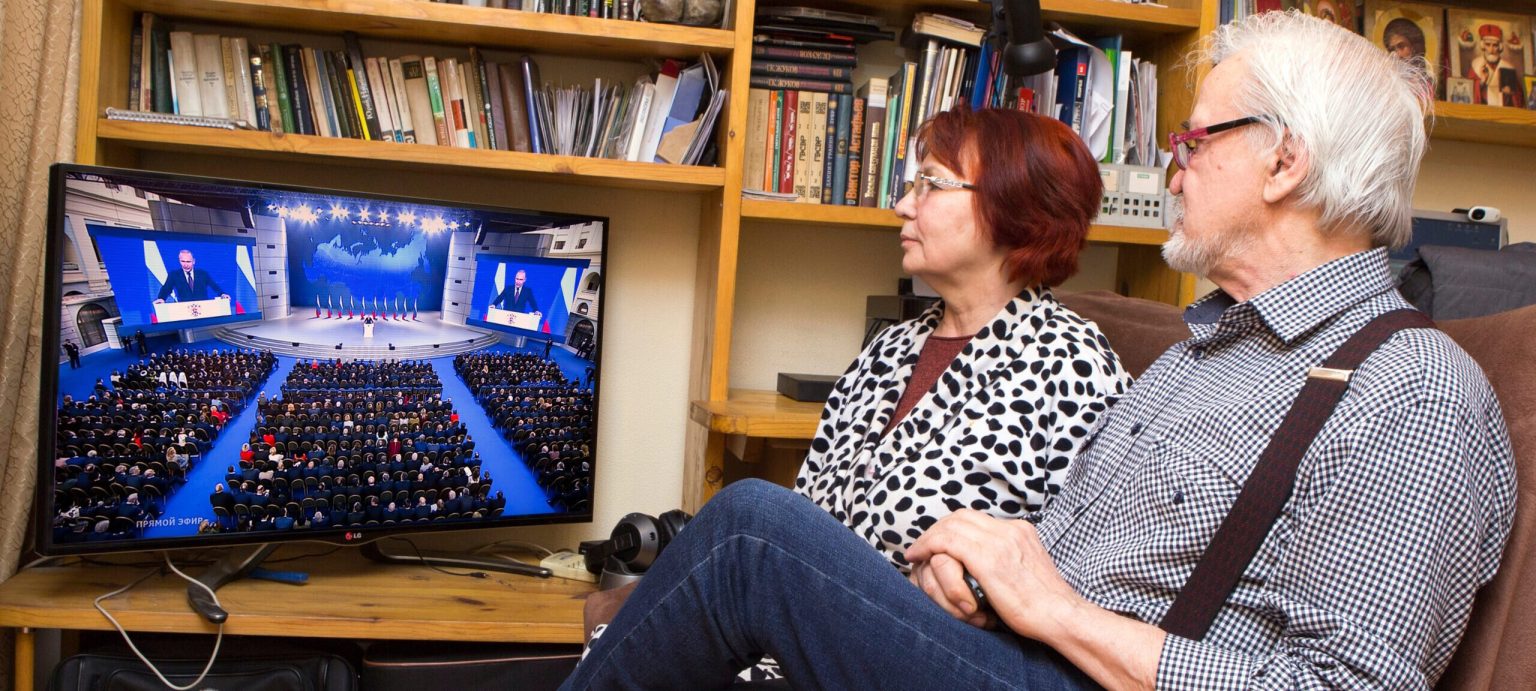Listen to the article
Russia to Boost Propaganda Budget by 54% While Cutting Military Spending
Russia plans a dramatic 54 percent increase in state propaganda funding for the coming year, even as it prepares to reduce military expenditures, according to Ukrainian Foreign Affairs Minister Andriy Sybiha.
“This clearly shows the priorities of the aggressor state: unable to win on the battlefield, they are betting heavily on disinformation,” Sybiha stated in his assessment of Russia’s budget priorities.
The Kremlin’s draft state budget allocates approximately $1.6 billion to state media operations, according to Ukrainian media outlet Slovo i Dilo. Analysts note these figures are preliminary and could increase further before final implementation.
The funding shift represents a strategic pivot in Russia’s approach to its ongoing conflict with Ukraine. Rather than doubling down on conventional military resources, Moscow appears to be intensifying what experts call its “information war” – a campaign of narrative control both domestically and internationally.
“In today’s world, words are also weapons, especially in diplomacy,” Sybiha remarked, highlighting the increasingly sophisticated nature of modern geopolitical conflicts where public perception and international opinion can significantly impact outcomes.
This budgetary reallocation comes amid growing challenges for Russian forces on the battlefield. Military analysts have noted Russia’s struggles to achieve decisive victories despite its significant advantage in troop numbers and equipment. By redirecting resources to information operations, the Kremlin appears to be acknowledging these difficulties while adapting its strategy.
Russia’s state media apparatus includes several influential organizations that broadcast globally in multiple languages, including RT (formerly Russia Today) and Sputnik News. These outlets have been identified by Western intelligence agencies as instruments of Russian foreign policy rather than independent news sources.
The expansion of Russia’s propaganda budget reflects a broader global trend of information warfare becoming increasingly central to international conflicts. Since the 2016 U.S. presidential election, when Russian information operations gained widespread attention, countries worldwide have grown more conscious of disinformation campaigns and their potential impacts on democratic processes and international relations.
For Ukraine, countering this expanded Russian information offensive presents significant challenges. The Ukrainian Foreign Affairs Ministry emphasized that “boosting information resilience is key to defending the country’s interests and pushing back against Russian information warfare.” This response acknowledges the importance of not only military defense but also protecting information spaces and combating false narratives.
Media experts note that Russia’s propaganda efforts typically follow several patterns: creating multiple contradictory explanations for events to confuse audiences, amplifying existing social divisions in target countries, and establishing alternative narratives that undermine Western institutions and alliances.
The financial commitment to propaganda comes as Russia faces significant economic pressures from international sanctions imposed following its 2022 invasion of Ukraine. Despite these economic constraints, the Kremlin appears determined to prioritize information operations, suggesting leadership views these efforts as critical to achieving its strategic objectives.
The shifting budget priorities also signal potential changes in Russia’s long-term strategy toward Ukraine and the broader international community. By investing heavily in narrative control while reducing military spending, Moscow may be preparing for a protracted conflict where international support and domestic opinion become increasingly decisive factors.
As both Ukraine and Western allies develop countermeasures against Russian disinformation, the effectiveness of this increased propaganda budget remains to be seen. What is clear, however, is that the battlefield of information has become at least as important as physical territory in the ongoing conflict.
Verify This Yourself
Use these professional tools to fact-check and investigate claims independently
Reverse Image Search
Check if this image has been used elsewhere or in different contexts
Ask Our AI About This Claim
Get instant answers with web-powered AI analysis
Related Fact-Checks
See what other fact-checkers have said about similar claims
Want More Verification Tools?
Access our full suite of professional disinformation monitoring and investigation tools




27 Comments
Silver leverage is strong here; beta cuts both ways though.
Good point. Watching costs and grades closely.
Silver leverage is strong here; beta cuts both ways though.
Good point. Watching costs and grades closely.
Good point. Watching costs and grades closely.
The cost guidance is better than expected. If they deliver, the stock could rerate.
Exploration results look promising, but permitting will be the key risk.
Good point. Watching costs and grades closely.
Nice to see insider buying—usually a good signal in this space.
Good point. Watching costs and grades closely.
Good point. Watching costs and grades closely.
Exploration results look promising, but permitting will be the key risk.
Good point. Watching costs and grades closely.
Good point. Watching costs and grades closely.
Uranium names keep pushing higher—supply still tight into 2026.
Good point. Watching costs and grades closely.
Good point. Watching costs and grades closely.
The cost guidance is better than expected. If they deliver, the stock could rerate.
Good point. Watching costs and grades closely.
Uranium names keep pushing higher—supply still tight into 2026.
Production mix shifting toward Propaganda might help margins if metals stay firm.
Good point. Watching costs and grades closely.
The cost guidance is better than expected. If they deliver, the stock could rerate.
Interesting update on Russia to Increase Propaganda Budget, Ukraine Claims. Curious how the grades will trend next quarter.
Good point. Watching costs and grades closely.
Good point. Watching costs and grades closely.
I like the balance sheet here—less leverage than peers.